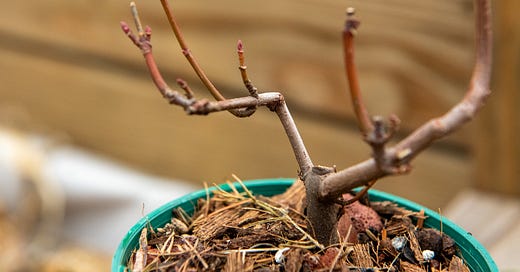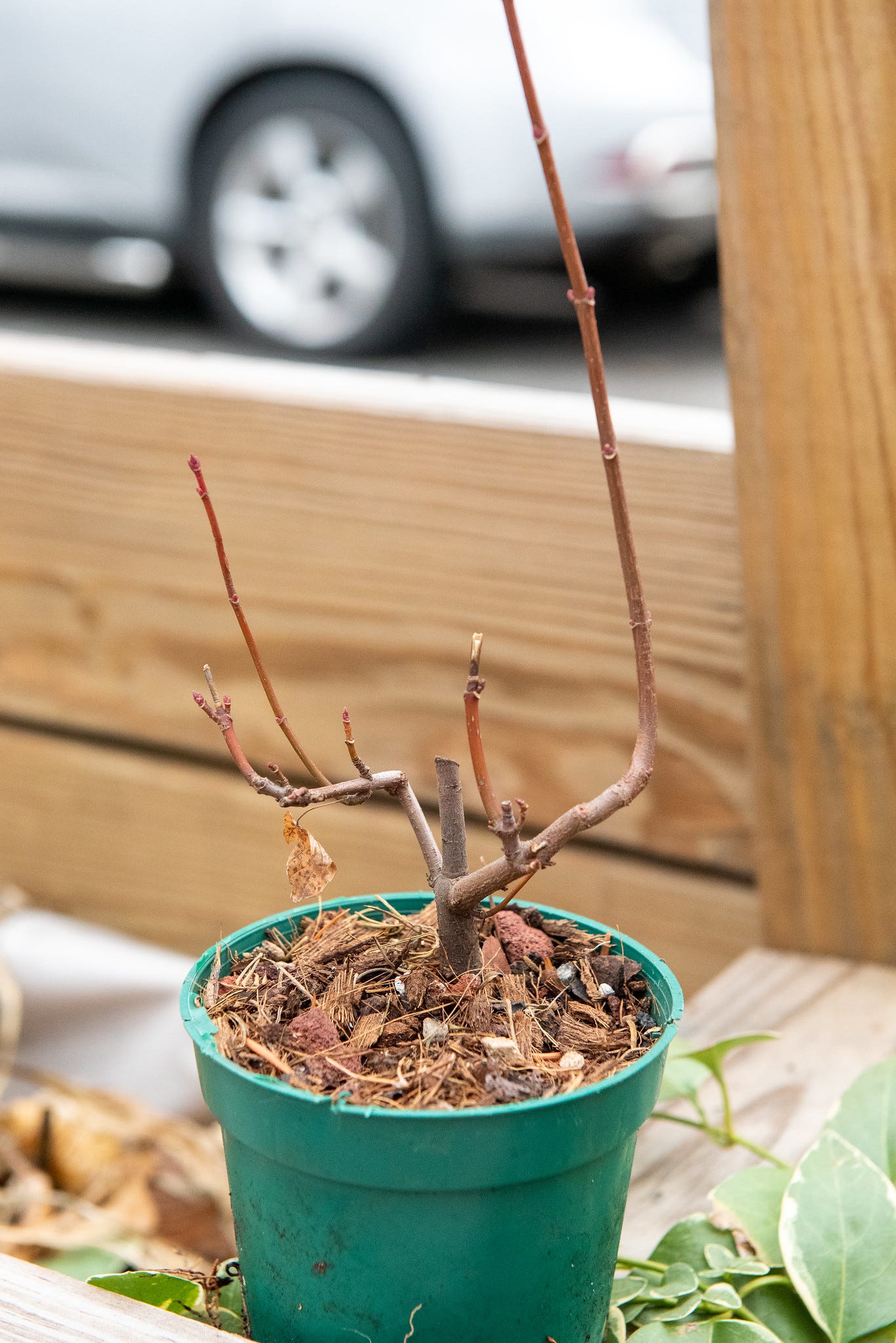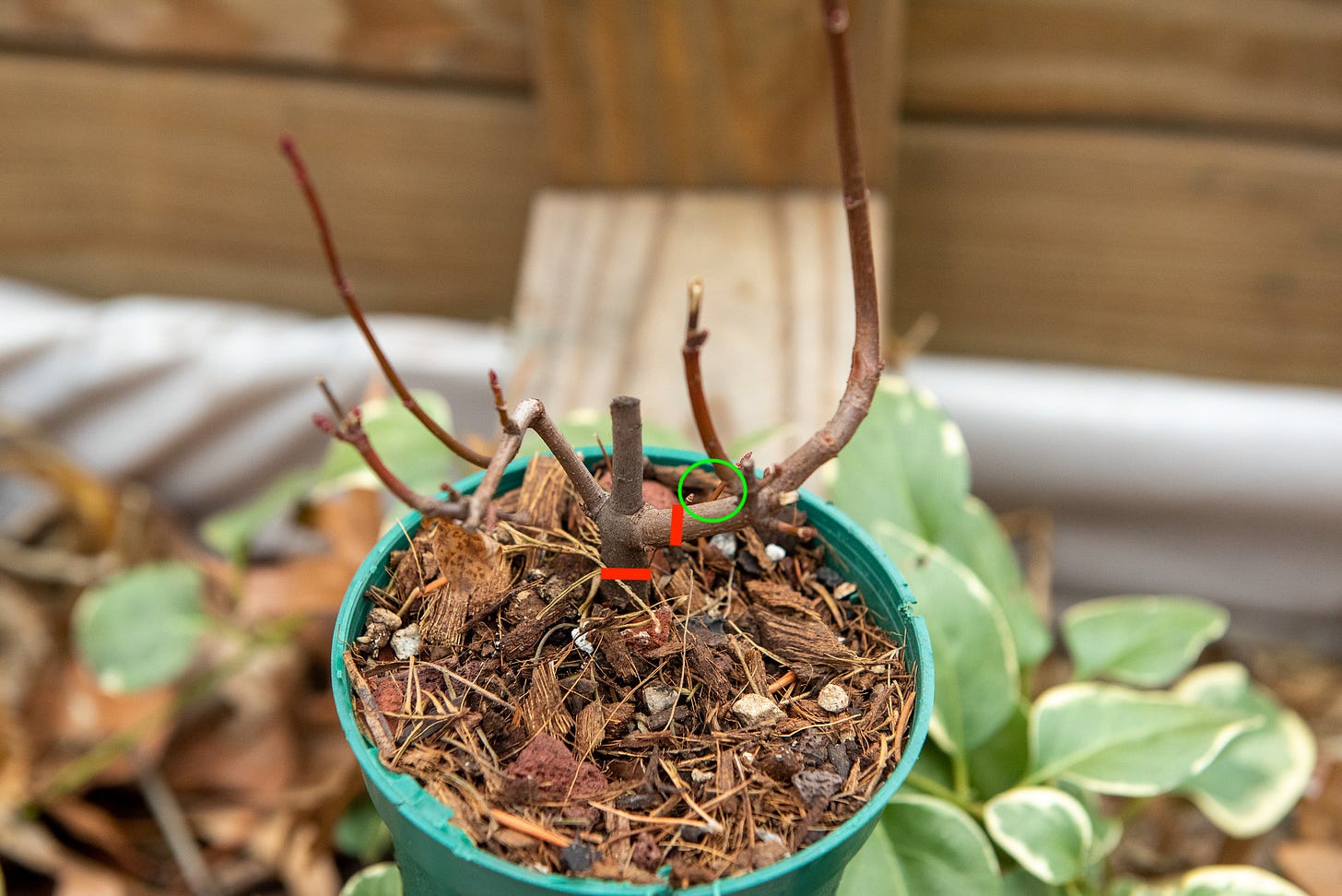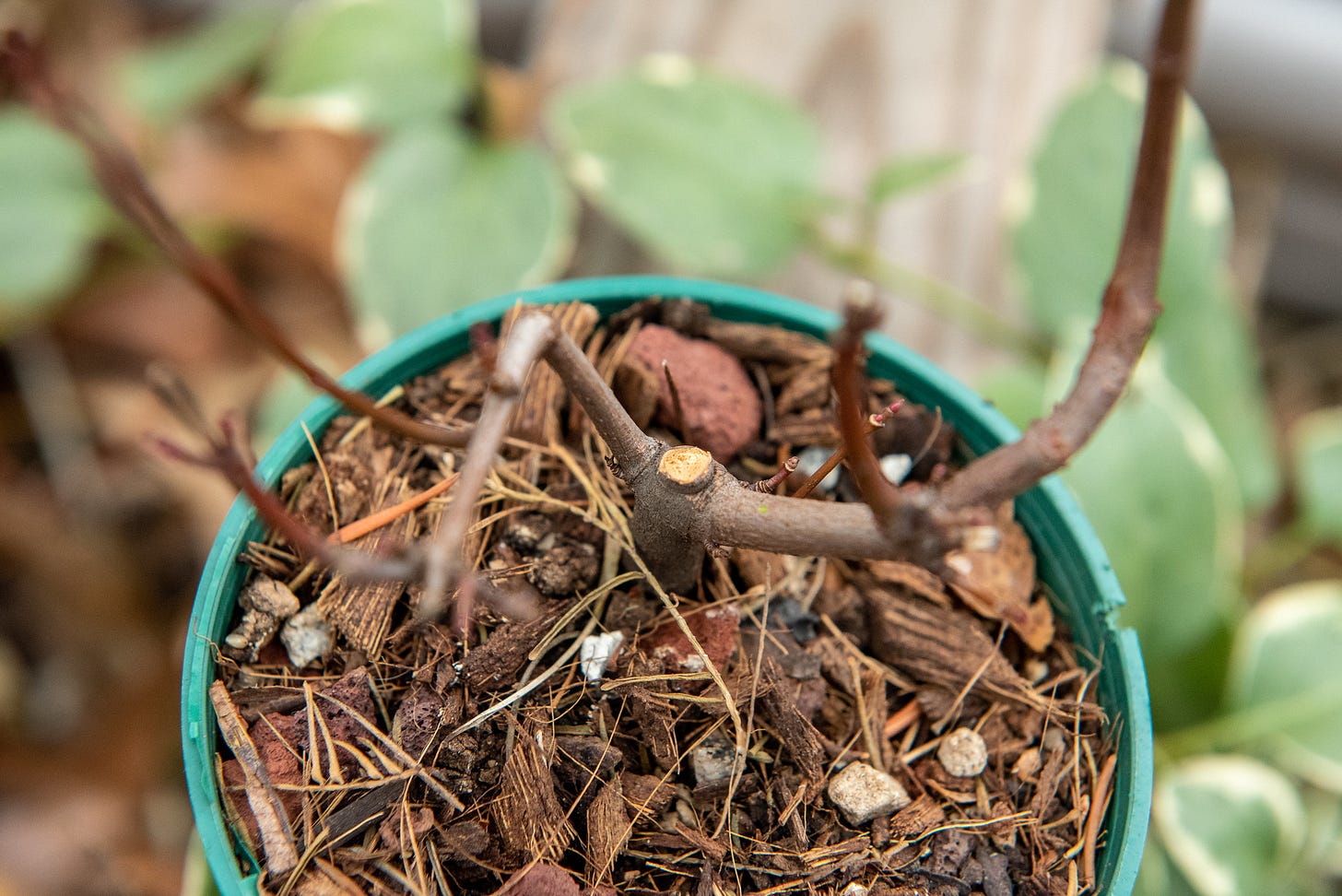The last time I wrote about sacrificial growth, it was in the context of harnessing a tree’s vigor. You pick a branch that won’t be part of the bonsai’s design and let it grow wild. Once you’ve sucked enough strength from the sacrifice branch, you chop it.
Today I want to talk about another aspect of sacrificial growth that I hadn’t considered earlier, using this red maple. The branch on the far right is all sacrificial growth to thicken the trunk beneath it. As I turn to the roots in preparation for a repot, I realize this sacrifice branch is also helping me put the tree’s unwanted growth into a section I can easily remove.
See how far apart the buds are spaced up that sacrifice branch, and how fat they look compared to the weaker buds below? This is apical dominance in action. Young trees race toward the sky to compete with their neighbors for sunlight. Whatever is the tallest, strongest branch becomes the apically dominant one that leads this growth. The tree funnels up its best sugar and growth hormones, doping up the star quarterback as far as it’ll go. In dense forest settings, the race can be a matter of life or death.
You see how the sacrifice branch has grown almost as thick as the trunk? That’s apical dominance for you. The neighboring branches circled in green are scraggly by comparison, with little weenie buds spaced close together. These wimps would soon get shaded out by the growing canopy in a forest. They’d dry up and wither away.
Yet they’re exactly the kind of branches you want for bonsai. In tandem with a thick trunk, thin branches create the forced perspective that miniaturizes a tree. The growth looks proportionate to a full sized tree and it keeps your eyes focused on the trunk, not up and away from it.
The sacrifice branch allows me to benefit from a tree’s apical dominance without disrupting the rest of the design. I suppose it’s the horticultural version of letting your dog run itself ragged at the park.
I might cut the sacrifice branch all the way back to the trunk, to let the wimpy one beneath take over. It all depends on the roots. Once I see how they look, I’ll have a better sense of the tree’s future. For now I keep my options open.
The bonsai artist Kazuo Onuma takes sacrificial growth to the extreme with his chunky maples and quinces. Scroll down to see how he uses generations of sacrifice branches to make trunks that look like miniature mountains. As the trees’ roots fill the colanders they’re planted in, Onuma stacks them on larger colanders filled with substrate. The trees develop monstrous root systems that will be easy to remove in the future. Meanwhile, the thin, wimpy roots close to the trunk will become the primary rootball when the tree is placed in a bonsai pot.
I’m gobsmacked. At the nexus of swaggering horticultural knowledge and aesthetics exaggerated to their extremes, these trees make my jaw drop every time I see them.
My little red maple won’t see success on that scale, but I want to apply some of Onuma’s methods and see how the tree responds. It’s a survivor, the only remnant of a failed forest planting in my early bonsai days. Maybe that forest was its first sacrifice play.
Tree reading
A new subway line in Madrid threatened 1,000 city street trees. After a large protest, the government has agreed to work around the trees, altering the line’s path so they won’t need to be cut down. [Associated Press]
More examples of Kazuo Onuma’s marvelous monster bonsai, mass cultivated as a commercial crop. [Bonsai Tonight]






